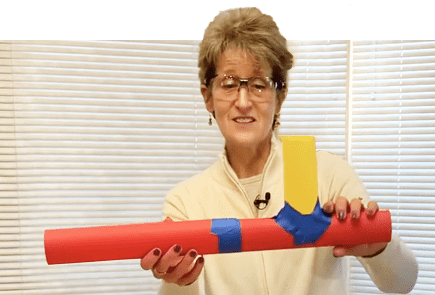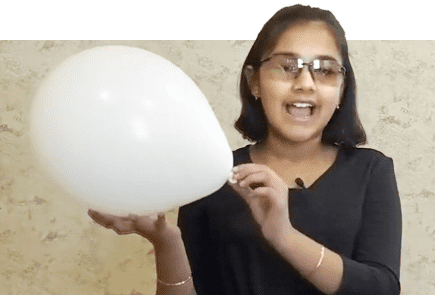Follow along with 3M’s Sam Reiss, as he shows you that magnetism is more than just a simple push and pull – it’s an example of the power of the earth itself.
Background
While magnetism has been around forever, people only somewhat recently figured out how to harness its power. In the 16th century, Queen Elizabeth tasked her personal scientist William Gilbert with figuring out why her explorers compasses were failing in certain areas of the world. They knew that the problem was related to magnetism, but were unsure as to how they could solve the problem. It took significant experimentation by Gilbert to figure that this was due to the influence of Earth’s magnetism. He had to try all sorts of materials to see which were affected by magnets and which were not. Let’s recreate some of that discovery process here today.
Key Concepts
- Magnetism
- Forces
Materials
- At least one magnet
- 10-15 small objects from your home
Preparation
- Collect 10-15 items from around your home. Try to pick some objects that you think will attract to a magnet, some objects that will not, and some you aren’t sure. Make sure you don’t grab anything electronic. Some things that might be interesting to try are keys, aluminum foil, coins, buttons, wooden blocks, paper clips, stuffed animals, pencils, books, silverware, plastic toys, paper, and socks.
- Make a prediction: What objects will and will not attract to a magnet? Make one pile for things you think will attract, one pile for things that might not attract, and one pile for things you aren’t sure.
- Choose an object to test. Bring the magnet close to the object and see if you can feel it attract or repel.
- Sort the objects into two piles: things that do attract or repel, and things that don’t. If you have an object where part of it attracts to a magnet and part of it doesn’t make a decision on where it goes, or make a new pile of objects like that.
- Make some observations about similarities and differences in the two (or three) piles. What kinds of things attract to magnets?
- Remember to clean up when you are done. Put all of the objects that you used back where you found them.
Observation and Results
The only objects that attract to your magnet will have some iron, steel (which is mostly made of iron), cobalt, or nickel in them. There might have been some things that were made of metal that didn’t attract to your magnet. That is because they don’t contain iron, cobalt or nickel. Other metals like copper, tin, and aluminum don’t attract to a magnet. Things like wood, cloth, and plastic also do not attract to magnets. This is because of the way the atoms in different materials behave. Everything in the world contains magnetic domains, which determines whether or not something will attract to a magnet. Think of a domain as a mini piece of a magnet inside an object. Every object has lots of domains, and in most things the domains are messy and disorganized, so they cancel each other out, so they don’t act like a magnet. When things are magnetic, the domains are lined up with each other, so they can make a magnetic field. Some special materials like iron, nickel, and cobalt have domains that can switch back and forth from being lined up with a magnetic field, to messy and disorganized so they stop acting like a magnet. This is why only iron, nickel, and cobalt attract to magnets.
Now that you’ve tested objects around the house, if you can get outside, see if you can find objects out there to try this. In particular, if you have access to a yard or a park, that can be a great place to find things in nature to try. How many of the things you find in nature do you think will work? If they do attract or repel, what does that tell you about the object?
A fun thing to do now that you know all this might be to have a magnet with you and check things whenever you think of it. If you come across something you’ve never tested with a magnet before, get out your magnet and see if it attracts or repels or does nothing. Again, try to remember what that tells you about the object you tested. Also, as before, avoid testing objects with electronics since they can sometimes break if they’re too close to magnets. And while they aren’t so common anymore, if you come across a cassette or video tape, keep the magnet away from those as well since those will erase with a magnet.
Safety First and Adult Supervision
- Follow the experiment’s instructions carefully.
- A responsible adult should assist with each experiment.
- While science experiments at home are exciting ways to learn about science hands-on, please note that some may require participants to take extra safety precautions and/or make a mess.
- Adults should handle or assist with potentially harmful materials or sharp objects.
- Adult should review each experiment and determine what the appropriate age is for the student’s participation in each activity before conducting any experiment.
Next Generation Science Standard (NGSS) Supported - Disciplinary Core Ideas
This experiment was selected for Science at Home because it teaches NGSS Disciplinary Core Ideas, which have broad importance within or across multiple science or engineering disciplines.
Learn more about how this experiment is based in NGSS Disciplinary Core Ideas.
Engineering Design (ETS)1: Engineering Design
Grades K-2
- 2-PS1-1. Different kinds of matter exist and can be described by its observable properties.
- 2-PS1-2. Different properties are suited to different purposes.
Grades 3-5
- 5-PS1-1. Matter of any type can be subdivided into particles that are too small to see, but event then the matter still exists and can be detected by other means.
Grades 6-8
- MS-PS1-1. Atoms form molecules that range in size from two to thousands of atoms. Molecules may be extended structures with repeating subunits.
- MS-PS1-2. Each pure substance has characteristic physical and chemical properties that can be used to identify it.
- MS-PS1-4. In a solid, atoms are closely spaced and may vibrate in position but do not change relative locations.
Grades 9-12
- HS-PS1-1. Each atom has a charged substructure consisting of a nucleus, which is made of protons and neutrons, surrounded by electrons.
- HS-PS1-2. The periodic table orders elements horizontally by the number of protons in the atom’s nucleus and places those with similar chemical properties in columns. The repeating patterns of this table reflect pattern of outer electron states.
- HS-PS1-3. The structure and interactions of matter at the bulk scale are determined by electrical forces within and between atoms.
- HS-PS1-4. Stable forms of matter are those in which the electric and magnetic field energy is minimized.
Grades K-2
- K-PS2-1. Pushes and pulls can have different strengths and directions.
- K-PS2-2. Pushing or pulling on an object can change the speed or direction of its motion and can start or stop it.
Grades 3-5
- 3-PS2-1. Each force acts on one particular object and has both strength and a direction. An object at rest typically has multiple forces acting on it, but they add to give zero net force on the object. Forces that do not sum to zero can cause changes in the object’s speed or direction of motion.
- 3-PS2-2. The patterns of an object's motion in various situations can be observed and measured; when that past motion exhibits a regular pattern, future motion can be predicted from it.
Grades 6-8
- MS-PS2-1. For any pair of interacting objects, the force exerted by the first object on the second object is equal in strength to the force that the second object exerts on the first, but in the opposite direction.
- MS-PS2-2. The motion of an object is determined by the sum of the forces acting on it; if the total force on the object is not zero its motion will change. The greater the mass of the object, the greater the force needed to achieve the same change in motion. For any given object, a larger force causes a larger change in motion.
Grades 9-12
- HS-PS2-1. Newton's second law accurately predicts changes in the motion of macroscopic objects.
- HS-PS2-2. Momentum is defined for a particular frame of reference; it is the ass times the velocity of the object. In any system, total momentum is always conserved.
- HS-PS1-3. If a system interacts with objects outside itself, the total momentum of the system can change; however, any such change is balanced by changes in the moment of objects outside the system.
Grades K-2
- K-PS2-1. When objects touch or collide, they push on one another and can change motion.
Grades 3-5
- 3-PS2-1. Objects in contact exert forces on each other.
- 3-PS2-3. Electric and magnetic forces between a pair of objects do not require the objects to be in contact.
- 3-PS2-4. The sizes of the forces in each situation depend on the properties of the objects and their distance apart and, for forces between two magnets, on their orientation relative to each other.
Grades 6-8
- MS-PS2-3. Electric and magnetic forces can be attractive or repulsive, and their sizes depend on the magnitudes of the charges, currents, or magnetic strengths involved and on the distance between the interacting objects.
- MS-PS2-5. Forces that act at a distance can be explained by fields that extend through space and can be mapped by their effect on a test object.
Grades 9-12
- HS-PS2-4. Forces at a distance are explained by fields permeating space than can transfer energy through space.
- HS-PS2-5. Magnets or electric currents cause magnetic field; electric charges or changing magnetic fields cause electric fields.
- HS-PS2-6. Attraction and repulsion between electric charges at the atomic scale explain the structure, properties, and the constant forces between material objects.
Grades K-2
- K-PS2-1. A bigger push or pull makes things go faster.
Grades 3-5
- 4-PS3-3. When objects collide, the contact forces transfer energy so as to change the objects' motions.
Grades 6-8
- MS-PS3-2. When two objects interact, each one exerts a force on the other that can cause energy to be transferred to or from the object.
Grades 9-12
- HS-PS3-5. When two objects interacting through a field change relative position, the energy stored in the field is changes.
Explore Additional Science at Home Videos and Activities

Bernoulli Balance
A jetliner can weigh over 300 tons, so why doesn’t it just drop out of the air?
3M’s SVP of Corporate Affairs, Denise Rutherford explains the Bernoulli principle and how without it, planes (and birds) couldn’t fly.

Diffusion with Miss America 2020
Ever wonder why things mix (or don’t mix) differently in different temperatures of water?
Join Camille Schrier, a scientist who was crowned Miss America 2020, as she explains diffusion and how substances move though water.

Feeling Sound
Believe it or not, you can feel sound! Join Gitanjali Rao, former Discovery Education 3M Young Scientist Challenge winner, as she teaches about the frequency of sound and how we perceive pitch.

